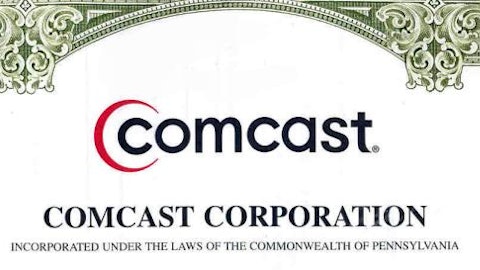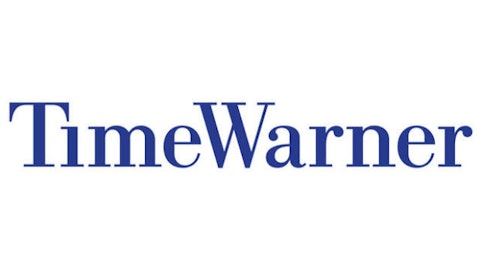As more and more people are cutting the cord when it comes to home entertainment, competition in the industry has never been more intense. Broadcast gave way to cable before satellite became an option, and now technology is driving the fight and offering an increasing number of choices. Four identifiable segments are beginning to emerge: cable and satellite, streaming video, TV enhancement, and advanced options.
In Part 1 of this series, I examined the traditional players — including cable and satellite providers, as well as communications companies that have begun to get into the game. Today, I’ll examine the various streaming video options. There is some overlap in certain cases, but by understanding each segment individually, you’ll get a clearer picture of the overall industry.
The streaming video players

As a first mover, Netflix, Inc. (NASDAQ:NFLX) has the ability to not only continue build a significant subscriber base but also to forge critical strategic partnerships and iron out glitches. Recently, Netflix, Inc. (NASDAQ:NFLX) announced user profiles that will allow as many as five users per account to customize recommendations and preferences. The company is working toward constantly improving the user experience.
What CEO Reed Hastings is really doing right, and another reason Netflix, Inc. (NASDAQ:NFLX) is strongly positioned among streaming video competitors, is producing original content. In the entertainment business, content is king. While some critics have observed that Netflix has had mixed success with its original shows, it’s moving in the right direction. Furthermore, the move by Hastings indicates that the CEO understands the importance of content in the long-term success of streaming video.
Amazon.com, Inc. (NASDAQ:AMZN): Amazon Prime is currently the most significant competitor to Netflix in the streaming space, and this year saw the fight intensify. Not only did Amazon.com, Inc. (NASDAQ:AMZN) aggressively go after some of the licensing deals that had once belonged to Netflix — remember, Amazon.com, Inc. (NASDAQ:AMZN) has a significantly larger balance sheet to play with — but it has also ramped up its own original production effort. Amazon.com, Inc. (NASDAQ:AMZN) recently announced that it’s putting six more pilots into production, most with a focus on kids’ programming — including a pilot aimed at 6- to 11-year-olds and a first-ever live action show.
According to a recent study from NPD Group, Amazon.com, Inc. (NASDAQ:AMZN) has made real inroads: In the first quarter of 2012, Netflix had 76% of single-subscription households; that number fell to 67% in the first quarter of 2013. The study also found that 10% of households now have subscriptions to both Netflix and Amazon Prime. Furthermore, Amazon.com, Inc. (NASDAQ:AMZN) has added 11,000 titles in 2013 to bring its library to roughly 41,000 titles.
One of the advantages for Amazon, and its customers, is that the $79-per-year membership gives you free two-day shipping on most Amazon products. This means that Amazon can appeal to consumers for reasons beyond home entertainment. When mixed with the depth of its wallet, Amazon is well positioned to push Netflix.
Redbox Instant: This joint venture between Outerwall Inc (NASDAQ:OUTR) and Verizon Communications Inc. (NYSE:VZ) is the newest addition to the streaming video battle. The new service gives you access to a distinct number of rentals at Redbox kiosks plus access to the 5,000 titles currently available. CEO Scott Di Valerio explains that where Redbox is the outer wall of old video stores (where new releases were displayed), the streaming service fills in the center of the store (older titles). While the service is in its infancy, one angle that could be a game-changer for Redbox Instant is mobile. With Verizon Communications Inc. (NYSE:VZ) as a JV partner, you can imagine that Redbox Instant could be the first streaming video player to truly make the jump to mobile. Netflix, for example, is available on most mobile devices, but the data usage is significant. If Verizon chooses to offer Redbox Instant to its wireless customers, while giving them a break on data, this could change the landscape.
But how do you profit?
All three of these options offer a solid investment outlook and could be worth owning — each for different reasons. Netflix is ahead of the pack, although the stock seems like it’s getting pricey at current levels. Longer-term, however, it’s adding subscribers, and that’s the key. Amazon has the balance sheet to “steal” content from its competitors, so watching key licensing battles will be critical. Redbox Instant is still early in the game, but the Verizon angle has potential. Until a clear winner emerges, a balanced allocation to all three options is the most conservative approach. Long term, it will be key to watch the content issue to determine whether streaming video profits can hold up.
Please look soon for the next parts of this series that will focus on the other two segments, and then consider the industry as a whole.
The article Profiting From the Battle for the Future of Television: Part 2 originally appeared on Fool.com and is written by Doug Ehrman.
Fool contributor Doug Ehrman has no position in any stocks mentioned. The Motley Fool recommends and owns shares of Amazon.com and Netflix.
Copyright © 1995 – 2013 The Motley Fool, LLC. All rights reserved. The Motley Fool has a disclosure policy.





